unit 10 & 12 study guide - HOPS & SOAP + tissue injuries
1/50
There's no tags or description
Looks like no tags are added yet.
Name | Mastery | Learn | Test | Matching | Spaced |
|---|
No study sessions yet.
51 Terms
history: chief complaint and mechanism of injury, reported signs and symptoms
what information is recorded in the subjective portion of the SOAP note?
findings from objective examination, observations, notes, chart information, diagnostic tests, relevant results from objective tests such as ROM, strength, neurovascular, and special tests.
what information is recorded in the objective portion of the SOAP note?
impression of the injury, a diagnosis
what information is recorded in the assessment portion of the SOAP note?
treatment plan, short term and long term goals, referrals to further medical examination or if EMS was called, return to play status (removed from activity, allowed to return, or advised to rest)
what information is recorded in the plan portion of the SOAP note?
bone scan (most preferred), MRI
which diagnostic tool is preferred when trying to diagnose stress fractures?
history: ask questions to identify the mechanism of injury, pain levels, or any other questions that will aid in a diagnosis
what is the first step in an evaluation?
distal pulse, capillary refill
when performing circulatory tests, what are you checking?
sensation, motor function, reflexes
when performing neurological tests, what are you checking?
swelling, ecchymosis, abrasions, deformity, bleeding, limping, restriction of motion, etc.
when performing an observation during an evaluation, what are you looking for?
active range of motion
athlete performs the range of motion
an incision is a clean open cut made by a cutting object. it is usually planned and made by a knife cut. a laceration is a jagged, irregular open wound made by a non-cutting object.
what is the difference between an incision and a laceration?
passive range of motion
evaluator does the range of motion while the athlete relaxes
longitudinal fracture
a fracture that runs the length of a bone/parallel to the bone
dislocation
displacement of a bone from its joint
ligament
tissue that connects bone to bone
tendon
tissue that connects muscle to bone
x-ray
what diagnostic tool is preferred to diagnose bone injuries?
the athlete might go into anaphylactic shock
what will happen if an athlete is stung by a bee and is allergic to bee stings?
avascular
lacking blood vessels in body tissue
MRI
what diagnostic tool is preferred to diagnose soft tissue injuries?
protect against infection, bacteria
what are the functions of the skin?
tissue pathology
what determines the degree sprain or strain an athlete has suffered?
1st degree strain
stretching and microscopic tearing of muscle/tendon fibers
- mild local pain increased with movement or tension, mild point tenderness, mild spasm, mild swelling, minor loss of function and strength
2nd degree strain
partial tearing of muscle and/or tendon fibers
- moderate pain increased with movement or tension, moderate point tenderness, moderate spasm, moderate swelling, ecchymosis, impaired muscle function
3rd degree strain
complete tearing of muscle/tendon tissue, separating muscle from muscle or tendon from bone
- severe pain, severe point tenderness, severe spasm, swelling, ecchymosis, hematoma, functional loss, palpable defects
1st degree sprain
stretching and microscopic tearing of ligament fibers
- mild pain, mild point tenderness, no abnormal motions, ligament end feel is normal, no swelling, minimal functional loss
2nd degree sprain
partial tearing away of ligament fibers
- moderate pain, moderate point tenderness, stress test may show abnormal motion, ligament end feel is normal, swelling, ecchymosis, moderate functional loss
3rd degree sprain
complete tearing of ligament tissue
- severe pain or no pain, severe point tenderness, abnormal motion, ligament end feel is empty, swelling, ecchymosis, functional loss
history portion
includes mechanism of injury, pain information: intensity, type, location, other questions related to the injury
observation portion
visual inspection of the injured area: observe for ecchymosis, swelling, abrasions, deformities, bleeding, limping, etc.
palpation portion
physical inspection of injured area to assess for abnormalities: feeling for swelling, point tenderness, deformity, temperature change, spasms, crepitus
stress portion
specific tests to assess the injury's severity and type: ROM, strength, neurological, circulatory, special tests
avulsion, stress, spiral, longitudinal, compression, comminuted, oblique, greenstick, transverse, depressed, blowout, pathological, epiphyseal
what are the different types of fractures?
A Silly Snail Likes Climbing Cliffs Over Green Trees, Dodging Big Pesky Eagles
mnemonic to remember these fractures!
avulsion fracture
when a ligament or tendon pulls so hard at its bony attachment that a portion of the bone is torn away.
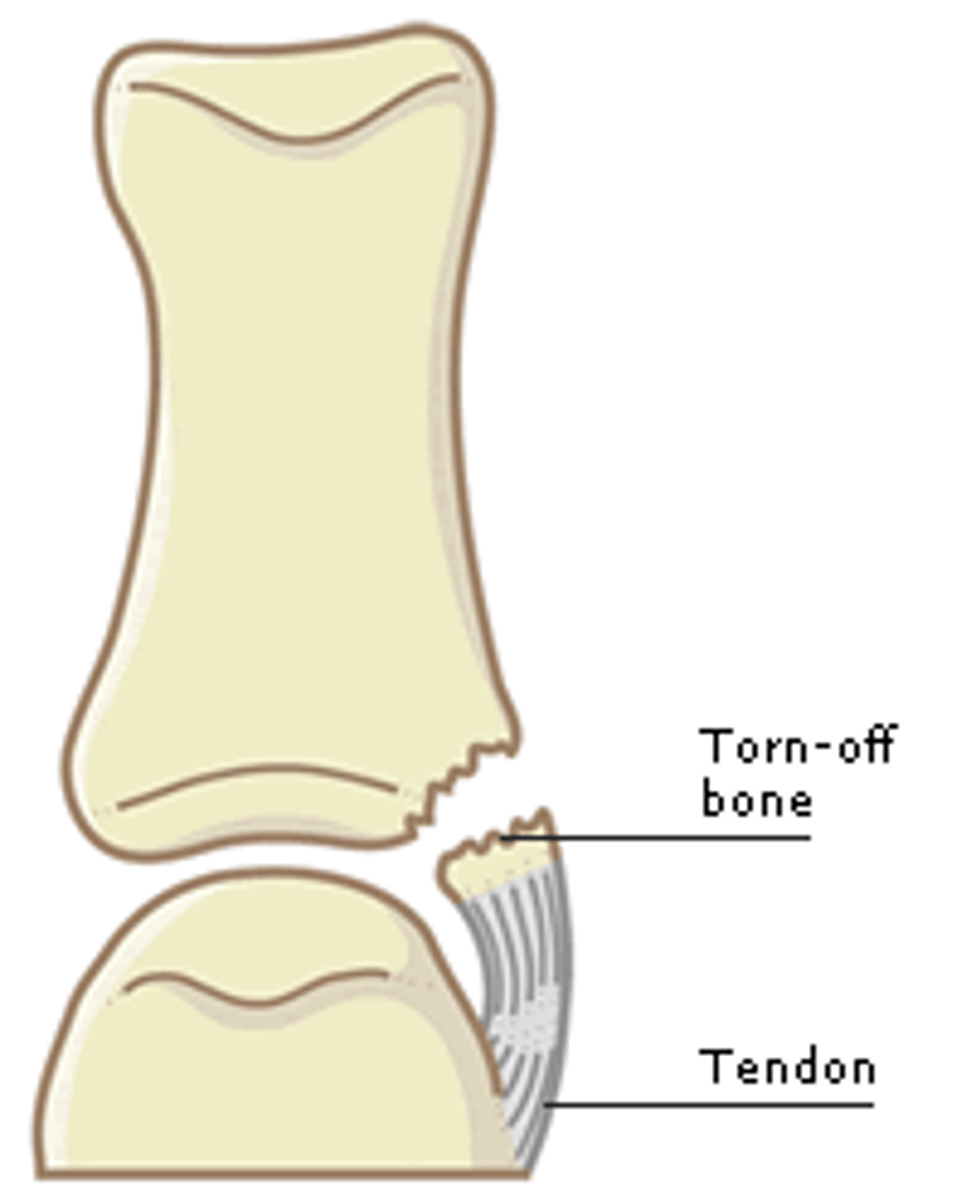
stress fracture
also known as hairline fractures, microscopic and cannot be viewed on an x-ray
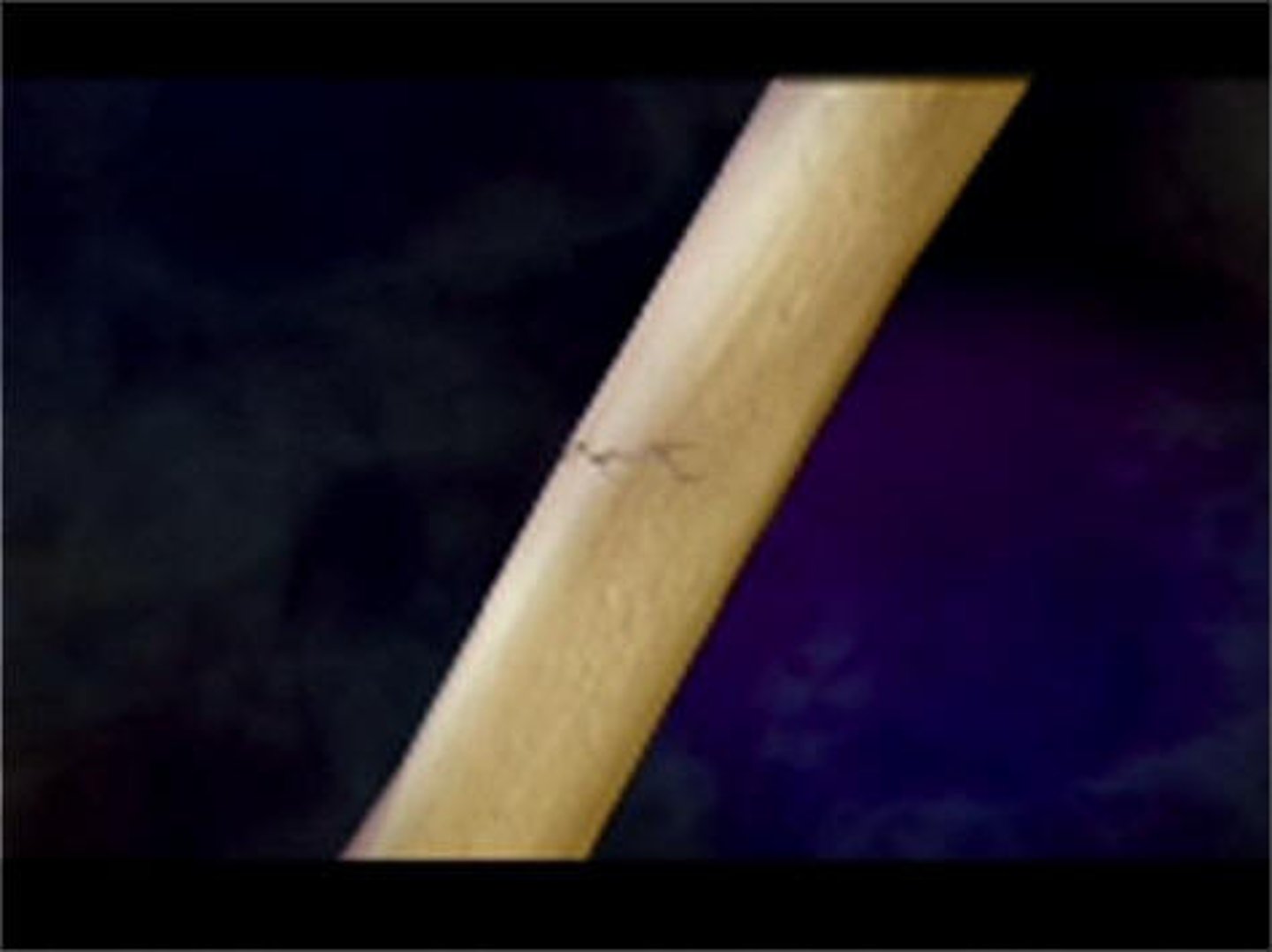
spiral fracture
torsional force along the length of a bone; may be caused by twisting
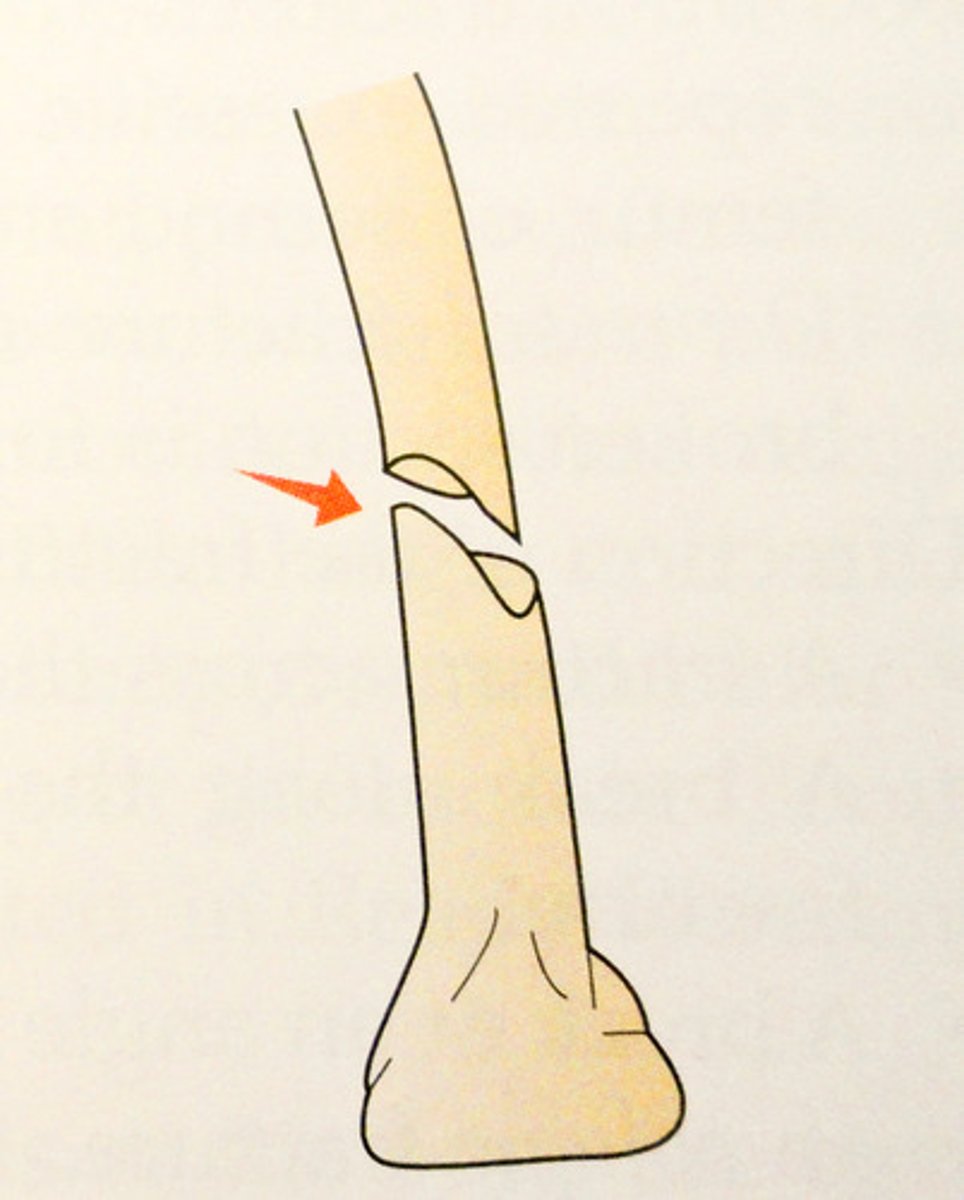
longitudinal fracture
runs the length of the bone (parallel to the bone) usually caused by impact

compression fracture
when opposing forces are applied to abone form both ends at the same time
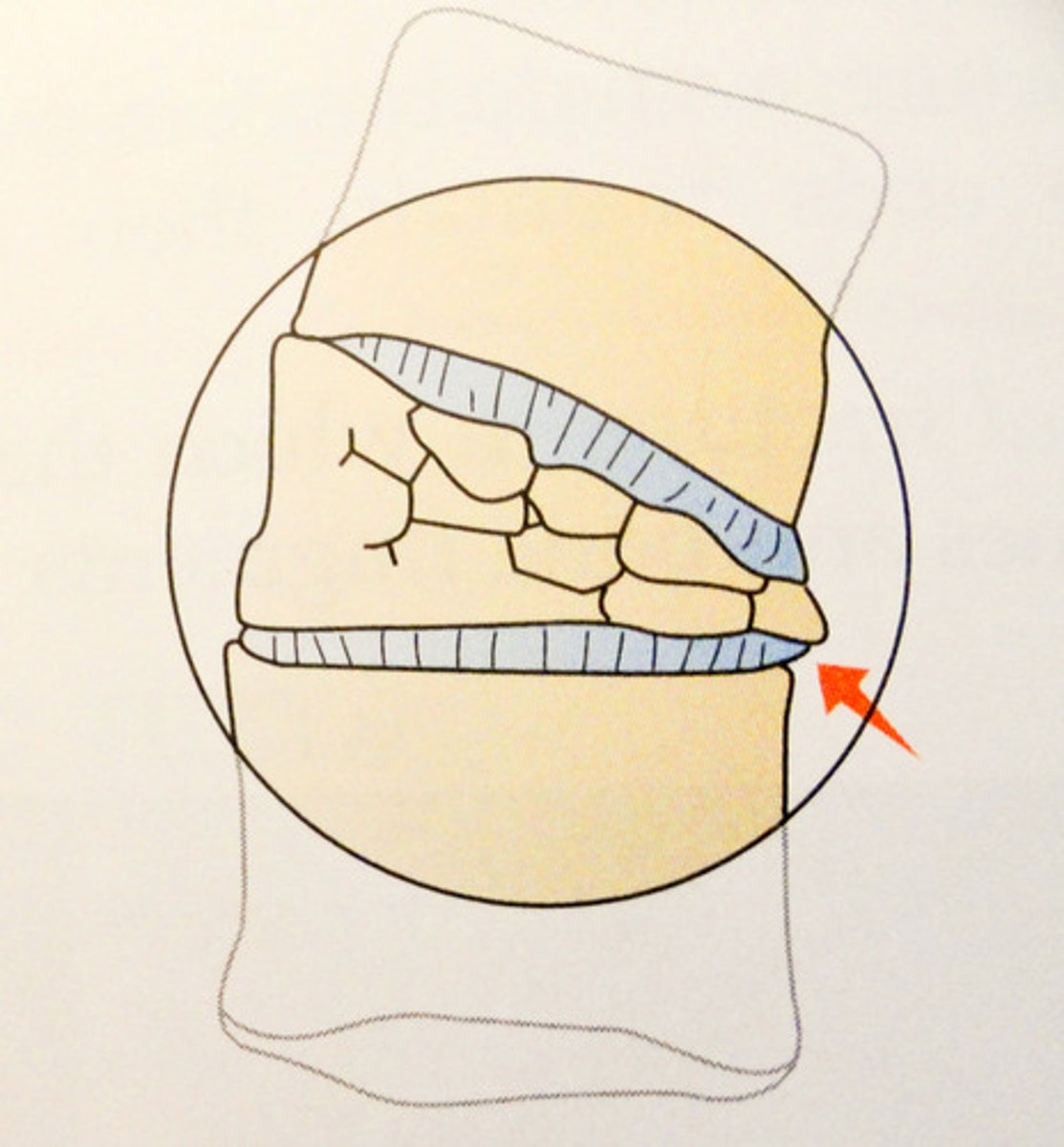
vertebrae
where are compression fractures most common?
oblique fracture
a diagonal line across a bone from one side to another

weight-bearing bones
oblique fractures in ______________ take longer to heal.
comminuted fracture
bone is crushed into smaller pieces, broken into many fragments
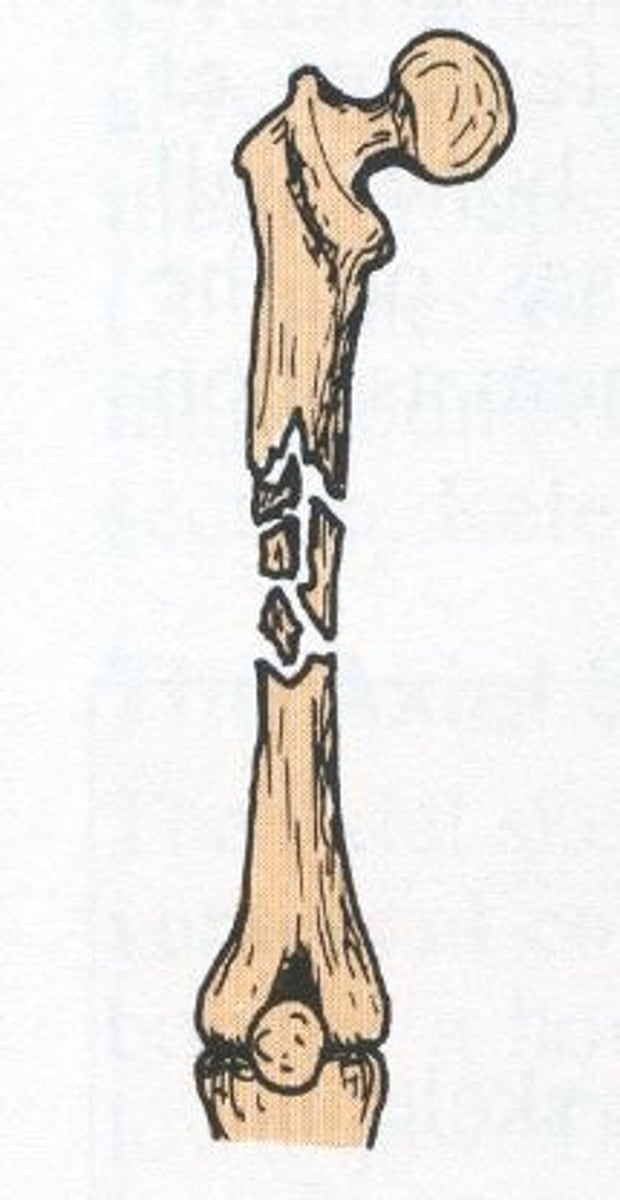
greenstick fracture
bone bends and fractures only partway through; incomplete.
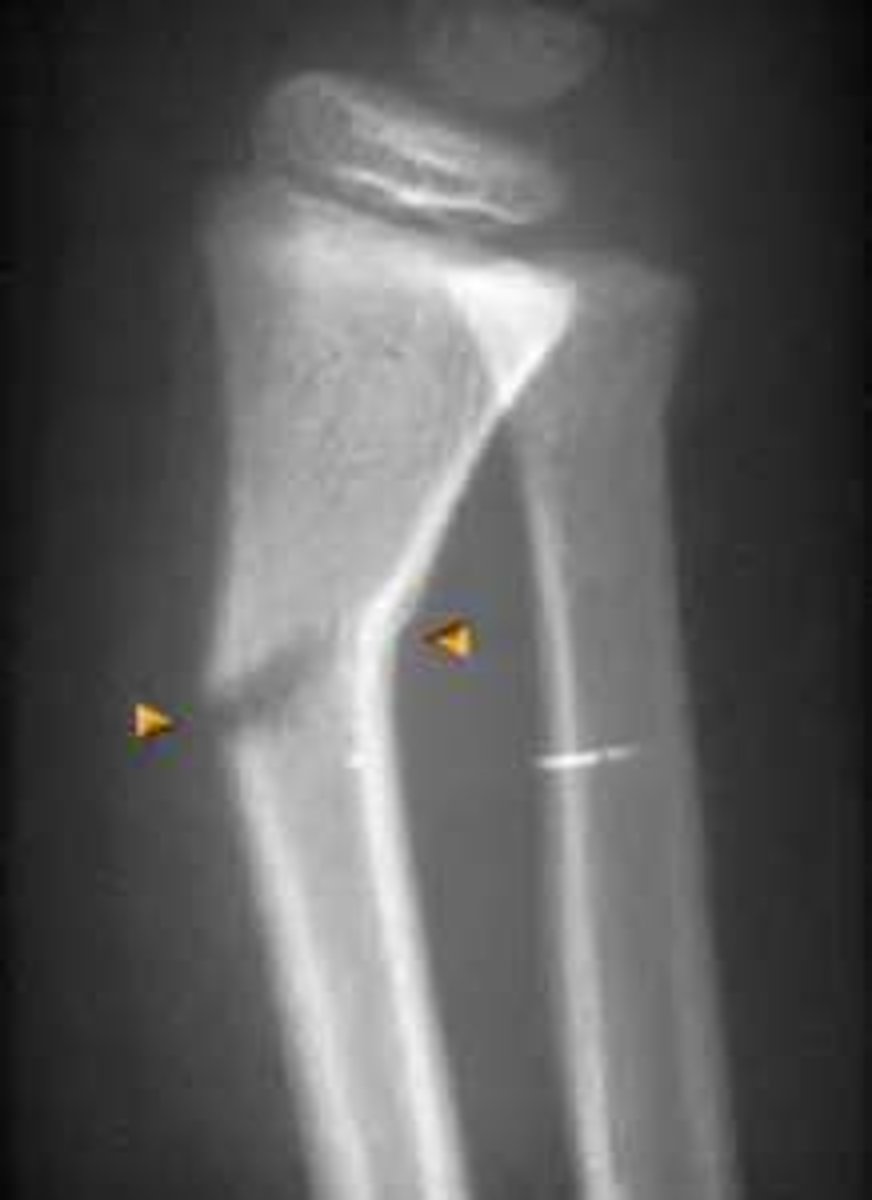
transverse fracture
traverse across perpendicular to the bone
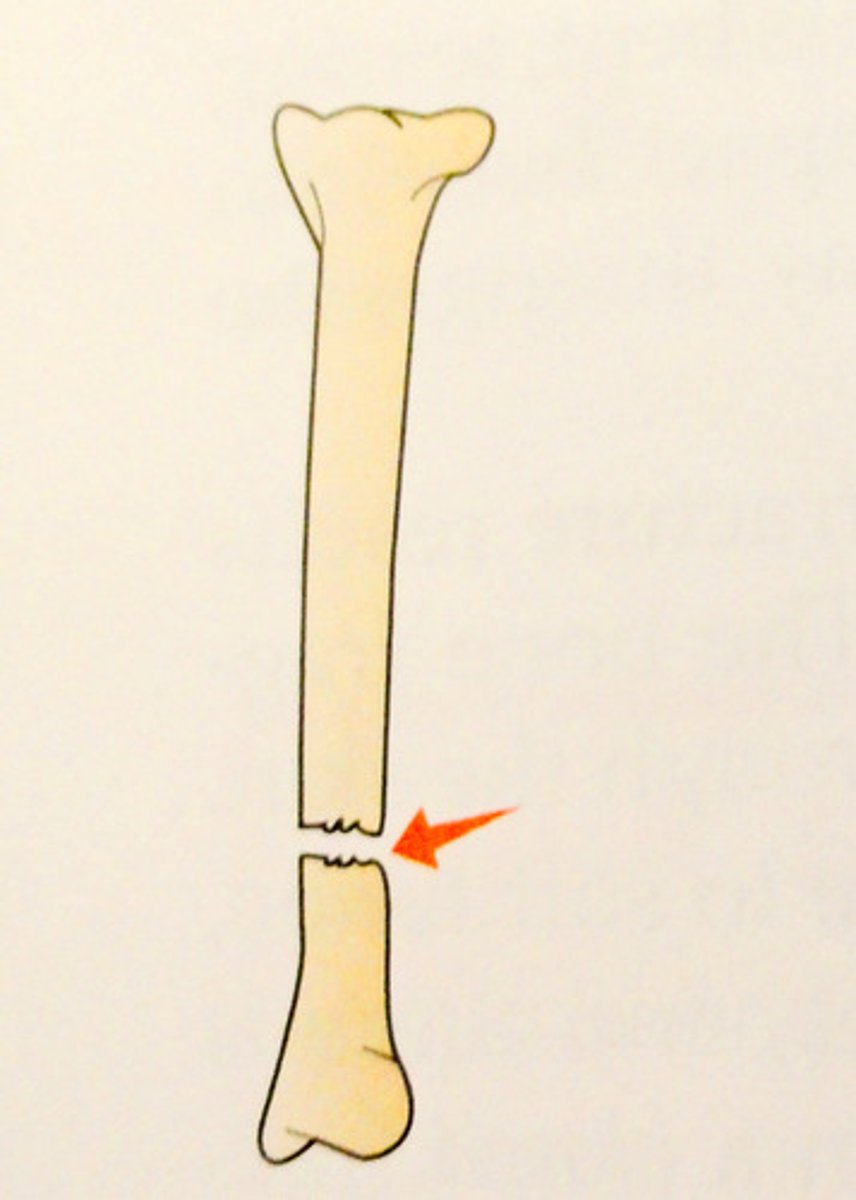
depressed fracture
fracture causing an indentation in the skull
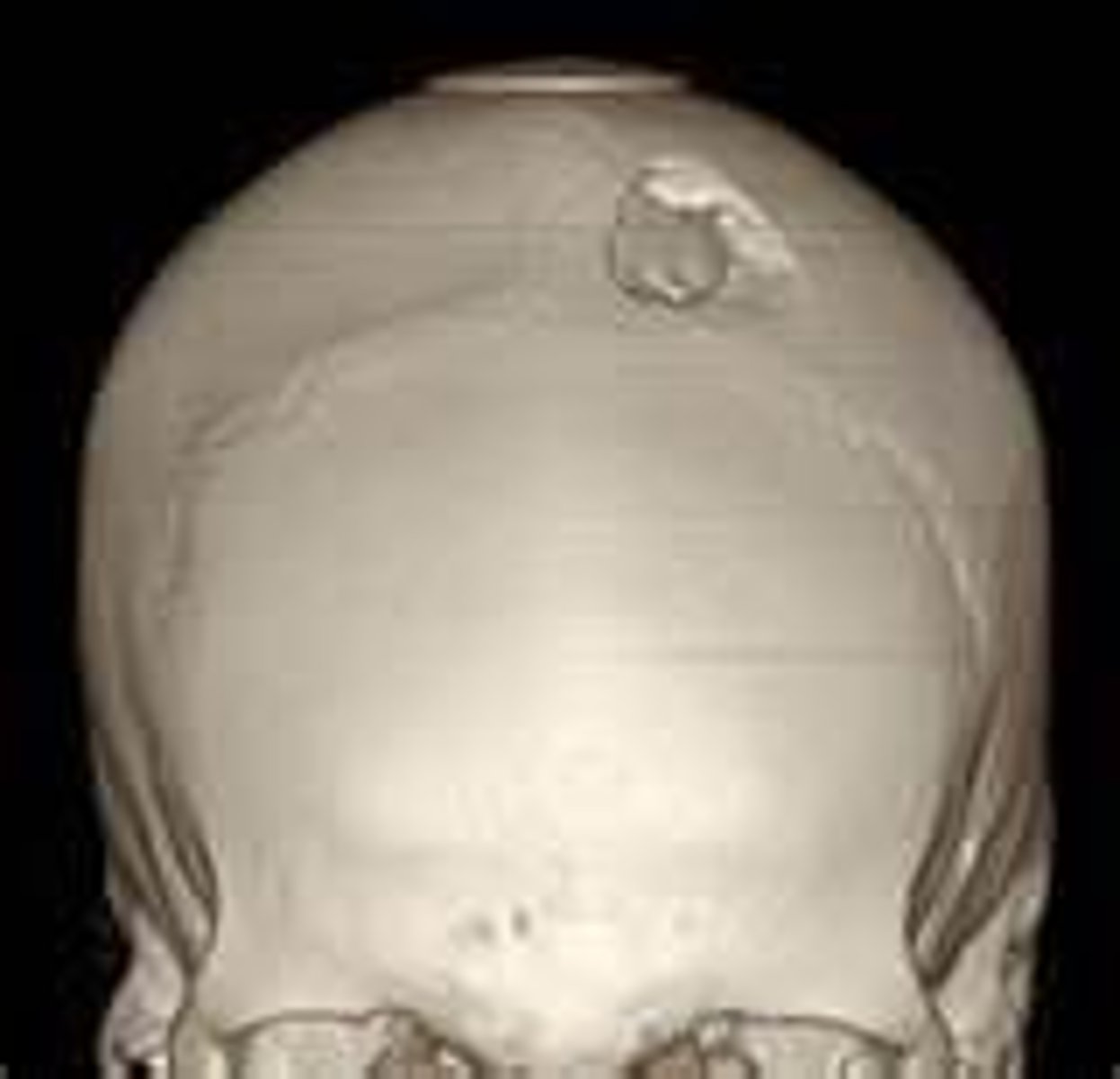
blowout fracture
when an eye is pushed hard backward and down into an eye socket due to the crushed/fractured bones on the floor of the orbit.
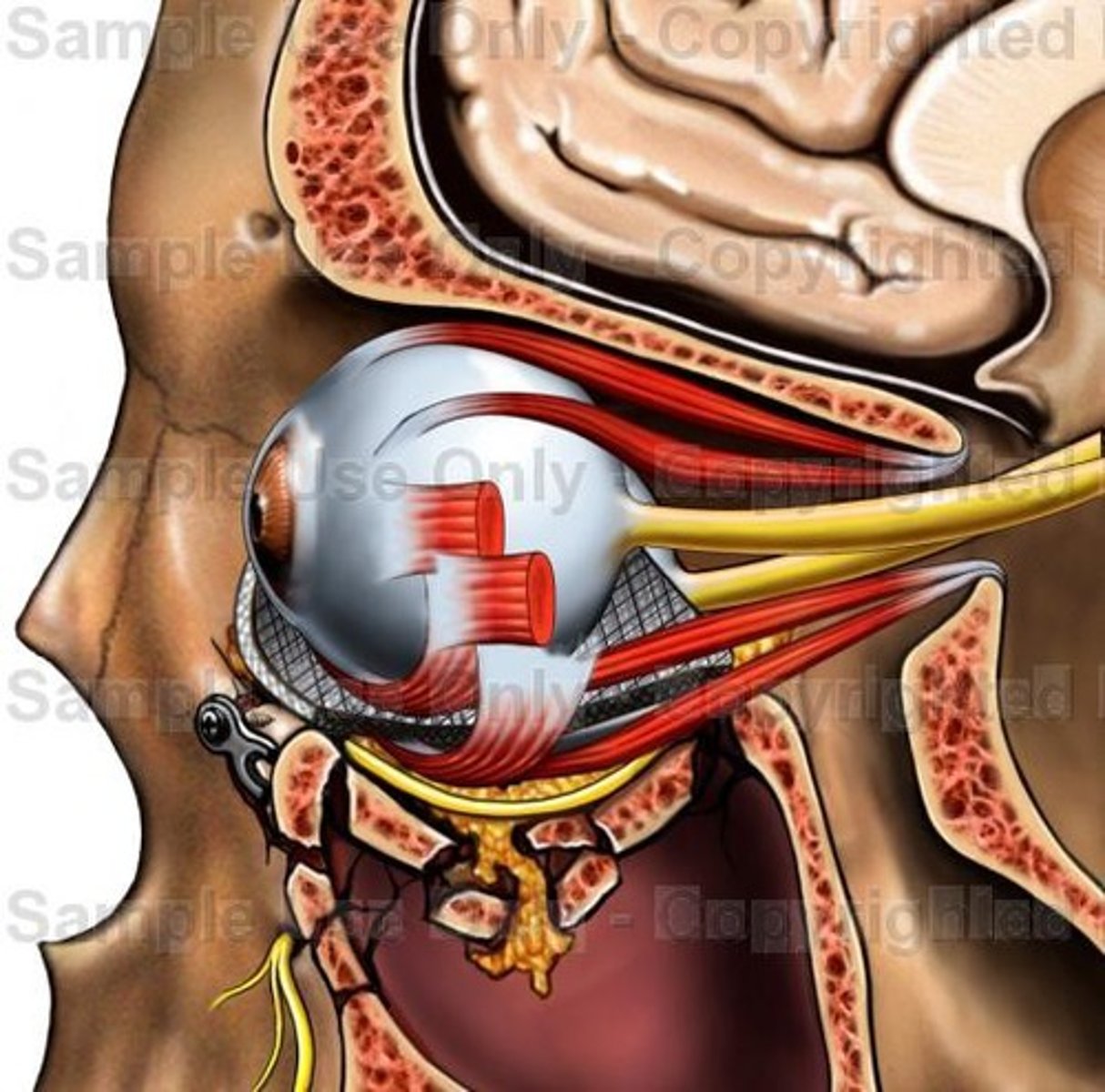
pathological fractures
conditions or diseases that may weaken the bone causing it to become easier to fracture.
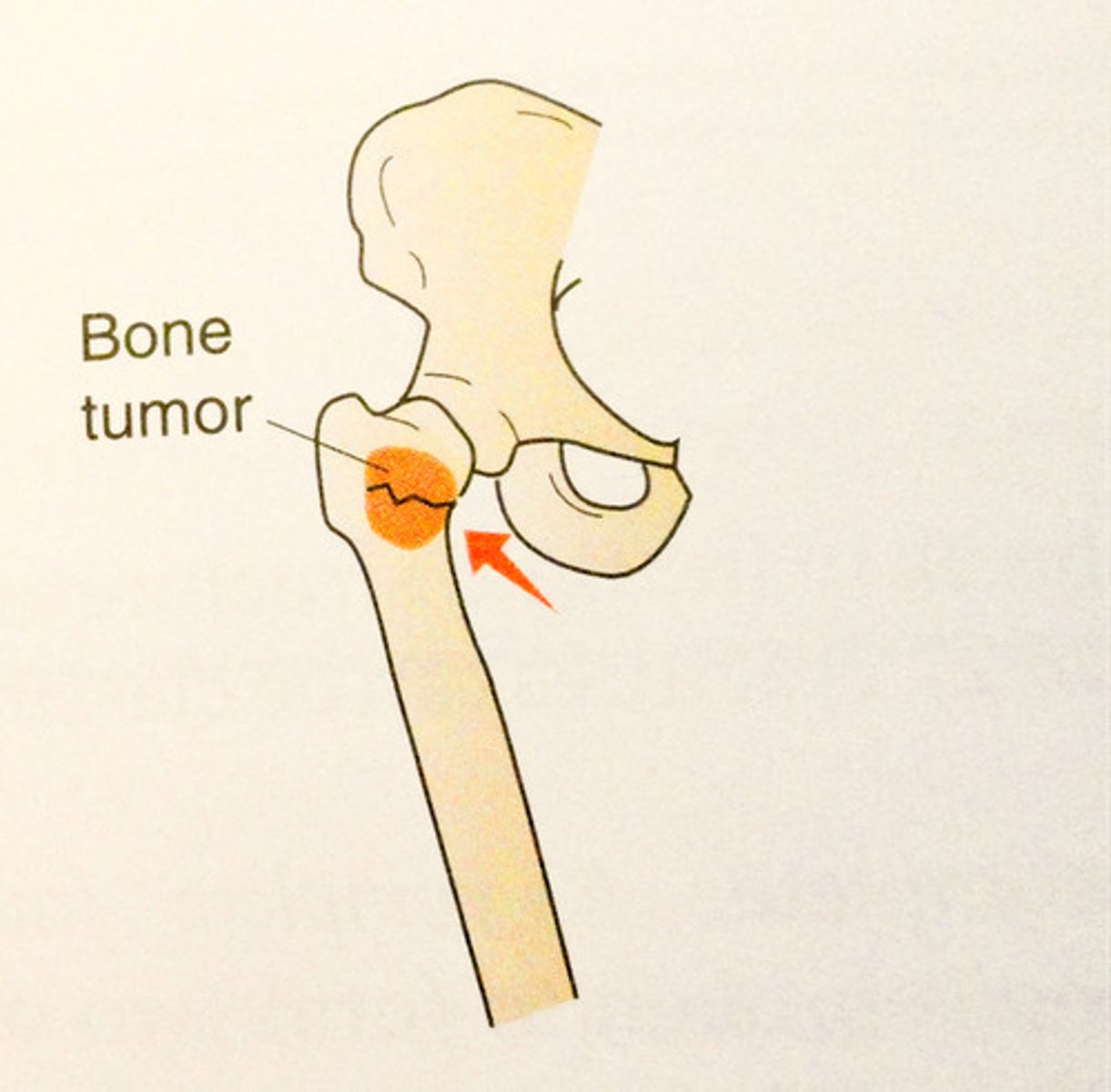
epiphyseal fracture
a fracture in the growth plate of the bone
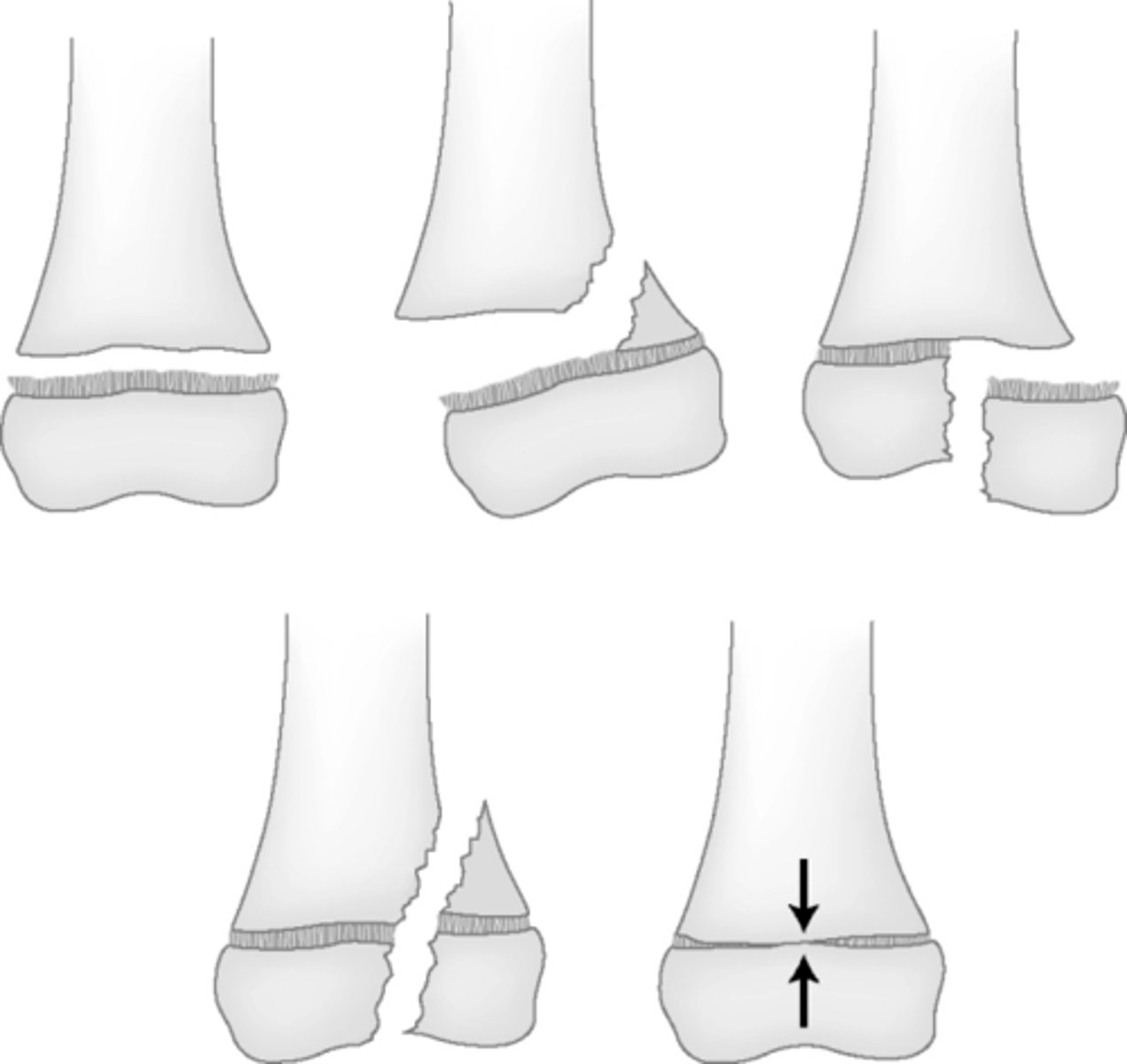
greenstick fractures, epiphyseal fractures
which two bone injuries are not suffered by adults?
salter-harris classification
what do you use to classify epiphyseal plate fractures?